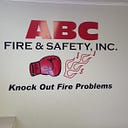Fire Safety in the Kitchen: Understanding the Role of Fire Extinguishers
Introduction:
The kitchen is one of the most common areas in the home where fires can occur. Cooking activities, electrical appliances, and flammable materials create potential fire hazards that can quickly escalate into dangerous situations. Understanding the role of fire extinguishers in kitchen fire safety is essential for homeowners to effectively respond to emergencies and protect their families and property.
The Importance of Kitchen Fire Safety:
The kitchen poses unique fire risks due to the presence of heat sources, cooking oils, and combustible materials. Unattended cooking, overheated appliances, and grease buildup can lead to fires that spread rapidly, endangering lives and causing significant damage to the home. Implementing fire safety measures, such as proper cooking techniques, regular maintenance of appliances, and the installation of fire extinguishers, is crucial for mitigating these risks.
Understanding Fire Extinguishers:
Fire extinguishers are portable devices designed to suppress small fires by expelling extinguishing agents, such as water, foam, dry chemical, or carbon dioxide. They are classified based on the types of fires they can extinguish, including Class A (ordinary combustibles), Class B (flammable liquids), Class C (electrical fires), and Class K (cooking oils and fats). For kitchen fire safety, fire extinguishers rated for Class K fires are recommended due to their effectiveness against cooking oil and grease fires.
Selecting the Right Fire Extinguisher:
When choosing a fire extinguisher for the kitchen, homeowners should consider several factors, including the size of the kitchen, the type of cooking appliances used, and the presence of flammable materials. A Class K fire extinguisher is specifically designed to handle cooking oil and grease fires and should be prominently located in or near the kitchen for quick access in case of an emergency.
Proper Use of Fire Extinguishers:
To effectively use a fire extinguisher in the event of a kitchen fire, follow the PASS method:
Pull the pin to unlock the extinguisher.
Aim the nozzle or hose at the base of the fire, not the flames themselves.
Squeeze the handle to release the extinguishing agent.
Sweep the nozzle or hose from side to side, covering the base of the fire until it is fully extinguished.
Maintenance and Inspection:
Regular maintenance and inspection of fire extinguishers are essential to ensure they remain operational when needed. Homeowners should visually inspect their fire extinguishers monthly to check for signs of damage, corrosion, or tampering. Additionally, fire extinguishers should be professionally inspected and serviced annually to verify their functionality and recharge them if necessary.
Conclusion:
In conclusion, fire extinguishers play a crucial role in kitchen fire extinguisher by providing homeowners with a means to quickly and effectively suppress small fires before they escalate into larger emergencies. Understanding the different types of fire extinguishers, selecting the appropriate extinguisher for the kitchen, and knowing how to properly use and maintain it are essential components of fire safety preparedness. By following these guidelines and incorporating fire extinguishers into their kitchen safety plans, homeowners can protect their families, homes, and belongings from the devastating effects of kitchen fires.
